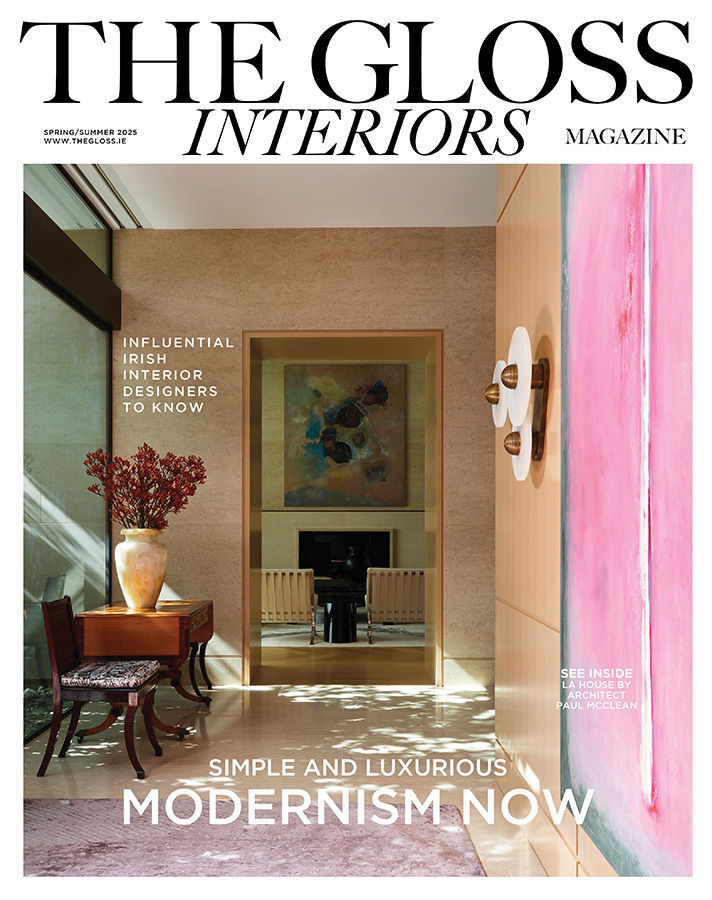Life is full of non-verbal cues and gestures that convey meaning. Navigating professional life means knowing how and when to use them to greatest effect, writes broadcaster MISHAL HUSAIN …
Once in office, President Trump was seen in novel social situations, greeting world leaders and hosting gatherings at the White House. Suddenly, the unusual way he shook hands began to stand out: at the announcement of Neil Gorsuch as his choice for the Supreme Court, he appeared to jerk the judge towards him when shaking his hand. A few days later the Japanese Prime Minister Shinzo Abe was on the receiving end – the photocall after their talks involved his hand repeatedly patted and pulled closer by the president, and held for longer than seemed comfortable. Was what was going on a conscious effort at dominance, an effort to signal who’d be calling the shots in the relationship?
In those early days of the administration, only Justin Trudeau appeared to have mastered how to handle the new president’s greeting style. Arriving at the White House, the Canadian prime minister took the initiative and moved forward to close the distance, putting his hand onto Donald Trump’s upper arm as they shook hands. But the sense that there was a message within these handshakes was reinforced with the visit of Angela Merkel, whose decision to let refugees enter Germany had been much attacked during the Trump campaign. As she sat with the president for their photocall the assembled press called for a handshake but were ignored. The chancellor looked puzzled and leaned over herself to ask if they should shake hands. There was no response, no eye contact and on that occasion, no handshake.
The Stanford University professor Deborah Gruenfeld says there is often a power dynamic that can be observed in people’s body language: those who have a higher status take up more physical space, while others tend to shrink themselves down, look away more and are also more likely to smile. “It’s not because things are better at the bottom,” she says. “People in the lower ranks are smiling because it’s their job to make sure people above them are never uncomfortable.”
You need to be particularly aware of this dynamic, she suggests, if you’re trying to convince or influence. “Understand what is at stake and adjust. If you are saying something authoritative, stop smiling. On the other hand, if you sense someone is threatened by your competence, perhaps give them a smile.” Communications expert Mary Civiello warns, however, about how jarring it can be when your words and your facial expressions are out of sync, using the example of a television interview given by the US education secretary Betsy DeVos. Throughout a series of tough questions over school policy, she kept smiling, but doing so made her appear out of touch with the seriousness of the subject. An early effort to quantify the role that body language plays in the messages we send came from Professor Albert Mehrabian in his 1971 book Silent Messages. In what he called a “speech oriented culture”, he said not enough attention was paid to the contribution of non-verbal behaviour to the process of communication. And yet, when we watch someone from afar, we will often make judgements: “We can observe a stranger talking to others in a distant group without being able to hear his words, and we can feel we like or dislike or feel that we know the kind of person he is.”
His analysis broke down the different ways in which we infer emotion in others: 55 per cent comes from facial expressions, 38 per cent from tone of voice and just seven per cent from the words themselves. This means that if, for example, your words are polite but your tone of voice and facial expression are hostile, the overwhelming message will be negative. Professor Mehrabian used the example of a job interview: “The applicant may say all the right things, but his contradictory behaviour may cost him the job … the interviewer may find that his bland and expressionless face and voice do little to confirm this verbalised enthusiasm, and may intuitively decide that he does not really mean what he says.”
What accounts for the much greater power of non-verbal messages over others in the Mehrabian analysis? He believes that while most of us are taught that politeness may mean having to bite your tongue, we are not taught about body language. “The continued emphasis on language skills both at home and in school,” he says, “is a sharp contrast to the neglect of training in non-verbal communication.”
It’s certainly true that I have thought much more over the years about the content of my scripts than about how I will sit or stand in the studio, while being quick to reach conclusions about other people based on their gestures or stance. It might be the way some people choose to remain standing in meetings – thus giving the impression that their time is too precious to devote much of it to a particular gathering – or the way senior figures, usually men, tend to make the most expansive use of office space. In some cities, “manspreading” has led to signs going up on public transport: on buses in Madrid and on the subway in New York.
Perhaps we haven’t fully shaken off the age-old differences in the ways men and women have been schooled to occupy space. In an influential 1980 essay, the political scientist Iris Marion Young explored fellow researchers’ analysis that femininity explains why a five-year-old girl throws a ball with less force and power than a boy of the same age. While Professor Young observed that a woman might approach a lifting task by bending down and focusing on using her arms – in contrast to a man planting himself firmly on the ground and using the power in his legs – she said the differences were not about anatomy or physiology, but socialisation: “For the most part, girls and women are not given the opportunity to use their full bodily capacities in free and open engagement with the world, nor are they encouraged as much as boys to develop specific bodily skills,” she wrote.
There is often a power dynamic that can be observed in people’s body language: those who have a higher status take up more physical space, while others tend to shrink themselves down
We are in a changed era today in terms of women’s participation in sport at all levels, the emphasis on strength and fitness and the level of interest in watching women compete at the elite level. But there are still ways in which physical spaces are organised primarily with men in mind. I’ve lost track of the number of conference stages I’ve been on where bar stools are the chosen style of seating. This is presumably to suggest an air of informality about the proceedings but it is unfavourable if not downright awkward for women wearing heels or in skirts. Lecterns, too, are often set at heights that suit men, leaving women speakers peering over the top, the microphone hiding their faces rather than sitting below them. Television news programmes co-presented by men and women often put the man on the left, the position in which the eyes of the viewer most commonly first alight.
In some conservative or religious societies, it can be hard for women who are navigating professional life to figure out how to greet men in the workplace, in order to come across as an equal and set the right tone. What if shaking hands with the opposite sex is inappropriate or frowned upon? It can be hard to know what to do instead, as I have found in several countries. The best approach is to be as purposeful as possible with a strong verbal acknowledgement and a nod of the head. Watch out for local customs that you may be able to adopt: in North Africa, I saw how people bring the right hand up and over the heart as the head dips in greeting, and followed suit.
Sometimes men have an advantage in appearing commanding simply because larger frames fill more of the available space – I feel this when working in large studios where there are swooping cameras and impressive angles but where it is easy to feel dwarfed by it all if you are on the smaller side. When Mary Civiello works with women in business, she advises them to think about how they can make small changes in how they use the space around them: “I would never want women to try to be manly, but there are things that we can do that both men and women recognise as leadership communication. If you sit at a conference table and it’s your moment to speak, don’t crunch yourself up. Lean forward, widen your arms and take up a little more space. Look to the far right, the far left and straight down the room.” One woman she worked with reported that when she did this, she noticed that her audiences began paying more attention. “She started to then feel more confident in real time.”
When it comes to first impressions, we know from a series of psychological studies how little time it takes for people to form judgements about one another – just a tenth of a second, according to a 2006 study. Another piece of research, based on videos of graduate teaching fellows at a university, found that a series of very short clips, played without sound to participants in an experiment, were strikingly similar to real-life assessments of the lecturers by their students.
The study’s main author, Nalini Ambady, said there was a wealth of information contained in these “thin slices” of behaviour, underlining the importance of non-verbal cues in the formation of judgements. The teachers who fared less well in the evaluations tended to frown, fidget, look down or fiddle with an object such as a pen or a piece of chalk. The researchers also found a correlation between the teachers’ perceived physical attractiveness and their perceived professional abilities, but even after this was controlled for, the overlap between the end-of-semester ratings and the ones based on a few seconds’ impression remained high.
Malcolm Gladwell, who wrote a book called Blink about conclusions reached in the blink of an eye, says thin-slicing – or finding meaning from what is experienced in a short period of time – is essential for our unconscious to understand what is happening around us. “It is a central part of what it means to be human. We thin-slice whenever we meet a new person or have to make sense of something quickly or encounter a novel situation. We thin-slice because we have to, and we come to rely on that ability because there are lots of situations where careful attention to the details of a very thin slice, even for no more than a second or two, can tell us an awful lot.” In some ways this is pretty chilling, but it also reinforces Professor Mehrabian’s argument for understanding the power of non-verbal as well as verbal communication.
Talking to colleagues about this revealed some of their own rituals. Kamal Ahmed, the BBC’s economics editor, says that when waiting for an important meeting, he will never take the seat offered by the receptionist. “When you sit down, your body relaxes and you lose focus, but if you stand you are more ready to present yourself. You are literally thinking on your feet.” One chief executive kept him waiting for 20 minutes, but he stood for the entire period because he wanted to greet him from that upright position. For him, there’s a psychological advantage in the approach, which he says was particularly important at earlier stages of his career: “Once people know your work, you naturally have more confidence and more presence. It’s more important when you are going up the ladder.” His words got me thinking: in the waiting-room situation he described, I would probably take advantage of the offered seat, and then, most likely, take out my phone and use the time to catch up with emails, news or social media. That would in turn mean that when the person I was waiting for appeared, they would find me looking down, shoulders hunched, engrossed in something other than the forthcoming meeting. I’d be unlikely to make the best possible first impression.
In some professions, posture is not only about the image you project but also goes to the heart of what you can achieve; if teachers do not command attention they cannot enable the learning of their pupils. Jo Palmer-Tweed, who runs a teacher training college, says body language is an implicit part of learning to be an effective teacher. “Once you set yourself at the front of the room you have put yourself in a position of extreme authority. The message to the children is that you know the answers. You need to maintain that authority while also being in amongst the learners. If you are giving out non-verbal signals that you are anxious, your class will be anxious and that’s not what you want in education.”
As women teachers can face being pigeonholed in a maternal role, she encourages them to establish themselves as nurturing figures rather than taking on a parenting-style approach. And for both men and women, body language will be an essential tool in managing classroom behaviour, often cited as one of the greatest fears for newer teachers. “The way you walk through the door, the type of eye contact you make with pupils in those first few seconds can make or break a lesson,” she says. Experienced teachers will have got to the point where this comes naturally, but for those early in their careers she suggests they psych themselves up in advance: “I’m going to walk into this room, the children are going to look at me, and they’re going to be quiet and listen because I’ve got something important to say.”
In 2012, one psyching-up technique that caught on fast came from a TED talk by the psychologist Amy Cuddy. She used her research on the effect of “high power poses” – sitting or standing in expansive positions – to suggest that they could be used to help people feel more powerful before a big or stressful moment in their lives. One pose in particular caught on: legs apart, hands on hips in the style of Wonder Woman. Amy Cuddy was later criticised because the physiological effects on hormone levels that she and her co-author had reported in their original work could not be replicated. But Mary Civiello is in no doubt about the individual value of deploying these techniques. “There is no question that the psychology of being bigger or acting bigger works. It stands to reason – before singers and performers go out onto a stage they don’t sit hunched up, they move around.” For some, the techniques may be so simple they barely think about it: taking a deep breath, standing up tall, or in my case, waving my arms about and stretching to get the blood flowing before going into the studio. At other times our bodies betray us and send the opposite message to the one we would give if we had thought about it: the wandering gaze that reveals a lack of interest or attention, the look that shifts quickly to someone else in the room, or – closest to home for me – checking my phone. I know that when I do this in front of my children, the message of my words (“It’s work … just give me a minute”) will be entirely contradicted and overridden by that of my actions: what I am really telling them, to my shame, is that something or someone is more compelling to me at that moment than they are. How easy it is to judge others harshly when they do this: how much harder to control ourselves.

Mishal Husain’s book The Skills (Fourth Estate) is out now.
LOVETHEGLOSS.IE?
Sign up to our MAILING LIST now for a roundup of the latest fashion, beauty, interiors and entertaining news from THE GLOSS MAGAZINE’s daily dispatches.










